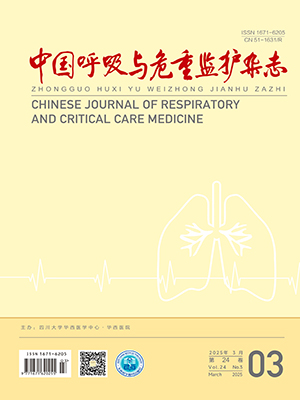Objective To investigate the effects of TiotropiumBromide on airway inflammation in a rat model of chronic obstructive pulmonary disease( COPD) . Methods Thirty Wistar rats were randomly divided into three groups. Group A received normal breeding as normal control. Group B and group C received LPS( 200 μg, intratracheally injected at the 1st and the 14th day) and tobacco exposure( from the 2nd day to the 30th day except the 14th day) to establish COPD model. And group C received a nebulized dose of Tiotropium Bromide( 0. 12 mmol / L, 10 minutes) 30 minutes before the tobacco exposure each time. Airway resistance and compliance were measured before sacrificed. Histological examination was performed with Hematoxylin-Eosin staining. The concentrations of IL-8 and LTB4 , total and differential cells counts in bronchoalveolar lavage fluid( BALF) were examined, and the concentrations of IL-8 and LTB4 in blood serum were also examined by ELISA. Results Severe lung inflammation and decreased lung function were demonstrated in the rats in the group B compared with those in the group A. The inflammatory cell counts in BALF, and the levels of IL-8 and LTB4 in BALF and serum were significantly increased in the group B compared with those in the group A. Tiotropium Bromide administration improved the parameters above. Conclusions The results suggest that Tiotropium Bromide can alleviate the lung inflammation and improve the lung function in a rat COPD model. These effects may be exerted through reducing the mediators of inflammation.
Citation: HE Mudan,RONG Ling,ZHOU Xin. Effects of Tiotropium Bromide on Airway Inflammation in a Rat Model with COPD. Chinese Journal of Respiratory and Critical Care Medicine, 2009, 09(3): 212-215. doi: Copy
Copyright © the editorial department of Chinese Journal of Respiratory and Critical Care Medicine of West China Medical Publisher. All rights reserved




